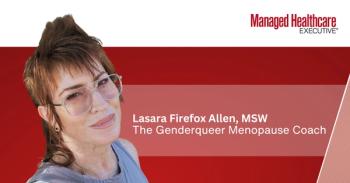
- Vol 28 No 7
- Volume 28
- Issue 7
How Embedded Care Managers Reduce Readmissions
A nonprofit organization is helping turn the tide on readmissions in North Carolina. The small steps it’s taking are resulting in big differences.
One of the most formidable barriers to improving post-acute care is lack of trust between patients and their care teams, says Jamie Philyaw, MSW, vice president of care management at Raleigh-based Community Care of North Carolina (CCNC), a nonprofit organization that has a contract with the state to manage Medicaid patients.
She remembers a 50-something-year-old patient met by one of CCNC’s care managers at the patient’s hospital bedside a few years ago. The care manager didn’t know it at first, but this patient was living in a tent-and lacked access to medications for his heart disease or to a cardiologist. The care manager spent many months building trust with this patient, who was repeatedly readmitted, and who was also struggling with substance abuse and behavioral health issues.
CCNC learned about this particular patient through a daily report on hospital admissions the nonprofit receives from facilities throughout the state. The patient’s repeated hospital visits led to CCNC’s team classifying him as a priority patient, which meant he needed immediate support. Because of the trust the care manager built with him, the patient agreed to a referral to a cardiologist and accepted the offer of secure housing through a local faith-based organization.
The care manager even facilitated delivery of the patient’s medications to his tent before he accepted housing. That was “the carrot,” Philyaw says. It demonstrated to the patient that his care manager was invested in him as a person and helping to improving his health.
Program specifics
In addition to daily reports on hospital visits across the state, CCNC also receives patient referrals from practicing clinicians and through embedded care managers at hospitals and practices throughout the state.
While some hospitals and physician practices receive a high volume of Medicaid patients and, thus, merit having a full-time CCNC care manager embedded at the facility, other facilities may have a care manager on-site a few hours a week. CCNC “meets patients where they are,” whether that’s at the bedside or in a physicians practice, or in their home (or tent, in the situation with the 50-something-year-old patient mentioned earlier), says Philyaw.
The organization provides services to all 100 counties in the state, which means it has “a lot of boots on the ground,” she says.
Physicians rely on the care managers to help determine patients’ complex needs and how to facilitate appropriate post-acute care, says Paul Mahoney, vice president for communications, CCNC. In fact, one care manager has relationships with physicians that span more than nine years, he says.
A critical aspect of what helps the program work is ensuring care managers are viewed as an asset by physicians. For example, CCNC’s care managers add value rather than cause disruption to a busy emergency room, says Philyaw. They often have office space and a regular schedule at the healthcare facility, which means patients have access to care management services when they need it. Care managers also provide detailed care management reports, attend follow-up visits along with patients, and, in some cases, document care in the EHR.
Post-acute care benefits
Care managers often meet patients before they’ve been discharged from the hospital-literally, while they’re still in a hospital bed. It’s at this point that a care manager can get involved in discharge planning-and schedule in-home assessments to determine any socioeconomic factors that may impact their approach.
An in-home assessment by CCNC was a lifesaver for an 8-year-old girl who was visiting the ER monthly due to severe distress from asthma, says Mahoney. The nonprofit got a referral from a physician who was alarmed about the number of times the patient had been to the emergency room, he adds. During the home visit, the care manager witnessed that the child’s home was infested with cockroaches and severe mold.
Because the child was living with her family in public housing, CCNC contacted the municipality to have the necessary repairs made to the home and had the cockroaches removed. As a result, the child was put on the appropriate medications and can now attend school regularly, Mahoney says. Because CCNC could determine the root cause of the patient’s asthma-related distress, the state was able to save money that would have been spent treating her in a medical facility.
Danika Mills, MSW, director of care management, notes that, for every dollar invested in CCNC, the state receives $3 in value.
In terms of care quality, inpatient admissions for CCNC clients are 28% below expected admissions, and emergency room visits are 8.4% below expected, according to CCNC’s 2017 annual quality report. The nonprofit’s management of chronic diseases including diabetes and hypertension exceed five of six HEDIS benchmarks for all reporting years.
Information sharing considerations
Kristen Barlow, senior consultant at The Advisory Board, says post-acute care providers are largely “pen and paper endeavors,” meaning most don’t have access to the EHRs used by physician practices and hospitals.
That’s a “nut that hasn’t been cracked” by a lot of post-acute care providers, she says. One challenge is the financial barrier-in that EHR vendors charge for their software based on a per-user license basis and post-acute care providers can’t pay for access to all of their healthcare partners’ EHR platforms.
This is another reason CCNC’s approach of embedding care managers in hospitals and physician practices works. They have access to those providers’ EHRs, which gives the nonprofit greater insight into the patients it’s treating, says Philyaw. “It’s a win-win and, to my knowledge, we have not had a provider push back regarding payment for [EHR] access,” she says. Because CCNC works with Medicaid patients, the organization also has access to patients’ utilization history and claims data.
Soon the nonprofit will implement a platform from population health and care management software firm VirtualHealth, which will allow providers to make referrals to CCNC electronically. In addition, the platform will provide data feeds related to admissions, discharges, and transfers, medical and pharmacy claims, EHR and lab results, and risk scoring, in addition to other information types, says Adam Sabloff, founder and CEO.
Having this data in one place will increase collaboration and facilitate risk stratification, he says. While Sabloff credits health information exchanges with capturing data from some healthcare entities, these data entities don’t analyze information about patients’ hospitalizations or alert care providers that a patient needs a new medication, which he says the new platform will do.
Aine Cryts is a writer based in Boston.
Articles in this issue
over 7 years ago
Three Vaccine Developments Healthcare Execs Should Watchover 7 years ago
Six Technologies That Will Transform Healthcareover 7 years ago
How New Initiatives Could Affect Generic Drug Costsover 7 years ago
Four Healthcare Executives Take On New Managed Care Rolesover 7 years ago
Top Four Causes of Female Mortality and Treatment AdvancesNewsletter
Get the latest industry news, event updates, and more from Managed healthcare Executive.


















































